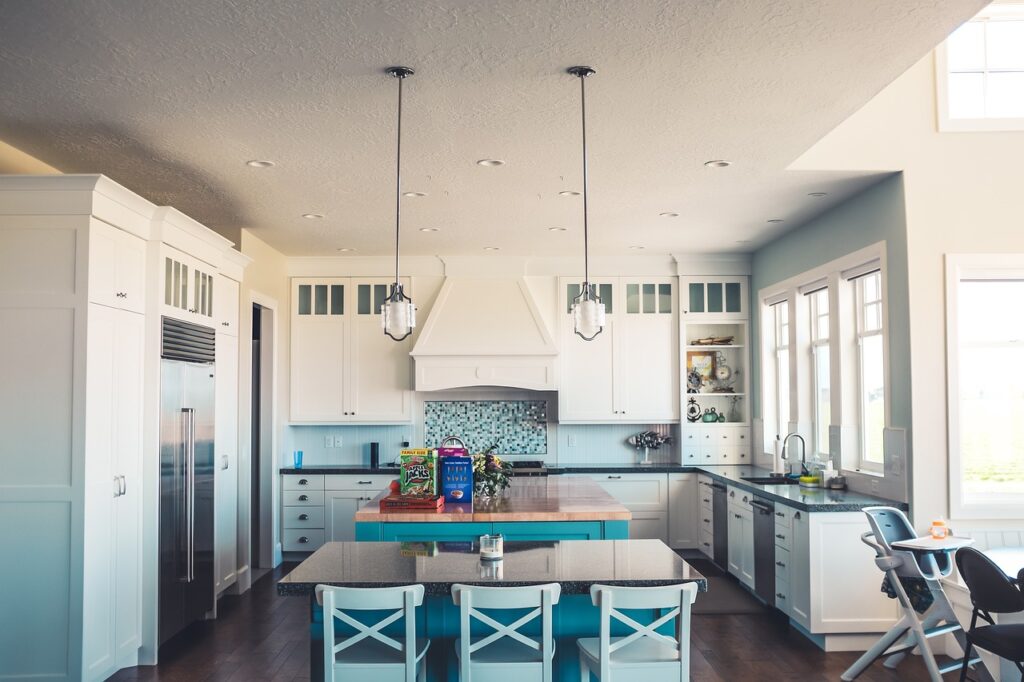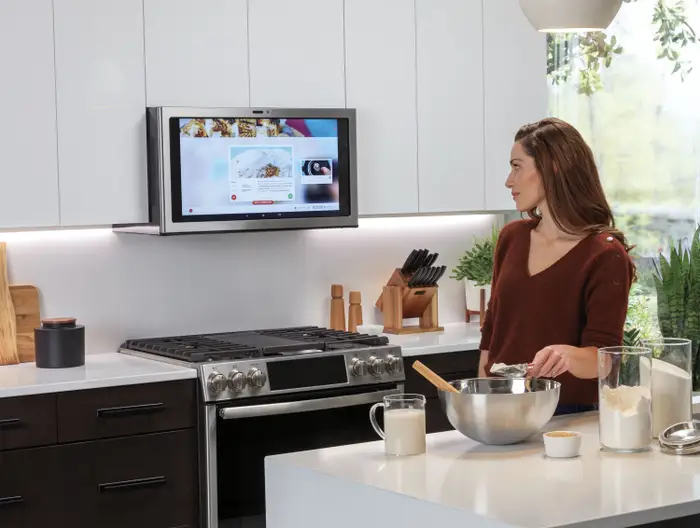Hey there! In this article, we’re gearing up for an exciting journey into the world of voice-controlled kitchen appliances within smart homes. Let’s kick things off by defining what exactly these appliances are and why they’re such game-changers in modern households. Picture this: no more fumbling with buttons or knobs, just smooth, hands-free operation thanks to voice recognition technology. Pretty cool, right? Now, let’s make sure we’re all on the same page about what we aim to achieve with this article. We’re here to dive deep into the functionality, perks, challenges, and future possibilities of these nifty gadgets. So, buckle up and get ready for an insightful ride as we explore the wonderful world of voice-controlled kitchen appliances!
Exploring Voice-Controlled Kitchen Appliances

Voice-controlled kitchen appliances represent a fascinating intersection of cutting-edge technology and everyday household convenience. These appliances, equipped with advanced voice recognition capabilities, offer a seamless and intuitive way to interact with various kitchen tasks. From setting cooking temperatures to brewing your morning coffee, voice commands empower users to effortlessly control their appliances without lifting a finger.
At the heart of voice-controlled kitchen appliances lies sophisticated voice recognition technology. By leveraging natural language processing algorithms, these appliances can accurately interpret and respond to verbal commands. This technology enables a hands-free experience, freeing users from the constraints of traditional buttons and knobs. Whether you’re busy chopping vegetables or have your hands full with other tasks, voice control allows you to multitask efficiently and keep your kitchen running smoothly.
The functionality of voice-controlled kitchen appliances extends across a wide range of devices, spanning from major appliances like refrigerators and ovens to smaller ones such as coffee makers and blenders. Imagine being able to preheat your oven or adjust the temperature of your refrigerator simply by saying a command aloud. With voice control, mundane kitchen tasks are transformed into effortless and enjoyable experiences.
Understanding Voice-Controlled Kitchen Appliances
Voice-controlled kitchen appliances encompass a diverse array of devices that have revolutionized the way we interact with our kitchens. At their core, these appliances leverage cutting-edge voice recognition technology to interpret and execute user commands. This technology enables users to control various kitchen tasks simply by speaking aloud, eliminating the need for manual input and streamlining the cooking process.
From major appliances like refrigerators, ovens, and dishwashers to smaller ones such as coffee makers, toasters, and blenders, voice control has been seamlessly integrated into a wide range of kitchen devices. This integration allows users to perform a multitude of functions, from adjusting cooking settings to starting and stopping appliance operations, with just their voice. Whether you’re preparing a gourmet meal or brewing your morning coffee, voice-controlled kitchen appliances offer unparalleled convenience and ease of use.
The operation of voice-controlled kitchen appliances is made possible by sophisticated voice recognition algorithms that can accurately interpret and respond to verbal commands. These algorithms analyze spoken words, phrases, and tones to identify user intent and execute the corresponding actions. As a result, users can interact with their appliances naturally, using conversational language rather than complex commands or protocols.
Benefits of Voice-Controlled Kitchen Appliances
Voice-controlled kitchen appliances usher in a new era of convenience and efficiency in the modern home. These innovative devices offer a plethora of benefits that enhance the cooking experience and streamline daily kitchen tasks. From simplifying meal preparation to improving kitchen safety, voice-controlled appliances have the potential to revolutionize the way we interact with our kitchens.
One of the primary advantages of voice-controlled kitchen appliances is the unparalleled convenience they provide. By enabling hands-free operation, users can effortlessly control various kitchen tasks without the need for manual input. Whether it’s adjusting cooking settings, setting timers, or checking the status of appliances, users can simply speak their commands, freeing up their hands to focus on other activities.
Moreover, voice-controlled kitchen appliances contribute to enhanced efficiency in the kitchen. With voice commands, users can streamline cooking processes and complete tasks more quickly and effectively. For example, instead of fumbling with buttons and dials to set cooking temperatures or timers, users can simply speak the desired commands, saving valuable time and energy.
Functionalities and Features
Voice-controlled kitchen appliances boast a wide range of functionalities and features designed to simplify and enhance the cooking experience. Leveraging advanced voice recognition technology, these appliances offer intuitive controls and personalized settings tailored to users’ preferences. From pre-programmed commands to seamless integration with smart home ecosystems, voice-controlled appliances redefine the way we interact with our kitchens.
One of the key functionalities of voice-controlled kitchen appliances is their ability to understand and execute verbal commands accurately. Users can simply speak their desired actions, such as adjusting cooking settings or starting and stopping appliance operations, and the appliances will respond accordingly. This hands-free operation streamlines kitchen tasks and allows users to focus on the cooking process itself rather than the mechanics of operating their appliances
Additionally, voice-controlled kitchen appliances offer pre-programmed commands and recipe integration, allowing users to access a wide range of cooking options with just a few words. For example, users can ask their appliances to preheat the oven to a specific temperature or brew a cup of coffee to their preferred strength, all with a simple voice command. This convenience eliminates the need for manual input and ensures consistent and reliable results every time.
Furthermore, voice-controlled kitchen appliances are designed to seamlessly integrate with smart home ecosystems, providing users with a comprehensive and connected cooking experience. Through integration with virtual assistants like Amazon Alexa or Google Assistant, users can control their appliances remotely and create customized routines for their cooking tasks. For example, users can program their appliances to start brewing coffee as soon as they wake up or preheat the oven while they’re on their way home from work, ensuring that their kitchen is ready and waiting whenever they need it.
Challenges and Limitations
While voice-controlled kitchen appliances offer a myriad of benefits, they also come with their fair share of challenges and limitations. Understanding and addressing these issues is crucial for ensuring the successful integration and adoption of these innovative devices in modern kitchens. From reliability concerns to security risks and accessibility issues, it’s essential to navigate these challenges effectively to unlock the full potential of voice-controlled appliances.
One of the primary challenges facing voice-controlled kitchen appliances is the reliability of voice recognition technology. While advancements in natural language processing have made significant strides in recent years, voice recognition systems are still prone to errors, particularly in noisy environments or with accents and dialects that may not be well-recognized. This can lead to frustration and inconvenience for users who rely on voice commands to control their appliances.
Additionally, security and privacy concerns are major considerations when it comes to voice-controlled kitchen appliances. Because these appliances rely on internet connectivity and often store user data, they are vulnerable to hacking and unauthorized access. This raises concerns about the safety and security of sensitive information, such as cooking preferences, schedules, and personal data, which could be exploited if not adequately protected.
Future Trends and Innovations
The future of voice-controlled kitchen appliances is teeming with possibilities, as advancements in technology continue to push the boundaries of what’s possible in the realm of smart home innovation. From improvements in voice recognition technology to expanded integration with emerging technologies like augmented reality (AR) and the Internet of Things (IoT), the landscape of voice-controlled appliances is poised for exciting developments in the coming years.
One of the most significant trends shaping the future of voice-controlled kitchen appliances is the continued advancement of voice recognition technology. As natural language processing algorithms become more sophisticated and accurate, voice-controlled appliances will be better equipped to understand and respond to user commands with greater precision and reliability. This will lead to a more seamless and intuitive user experience, making voice-controlled appliances even more indispensable in the modern kitchen.
Case Studies and Examples
Real-life examples illuminate the practical benefits of voice-controlled kitchen appliances. Samsung and LG integrate voice tech into refrigerators, allowing hands-free control for tasks like checking contents or creating shopping lists. GE Appliances and Whirlpool introduce smart ovens enabling users to adjust settings, set timers, and preheat with voice commands, streamlining cooking. Nespresso and Vitamix offer smart coffee makers and blenders, simplifying morning routines with voice-activated brewing and blending. These instances illustrate how voice-controlled appliances enhance convenience and efficiency in the modern kitchen, transforming everyday tasks for users.
Adoption and Consumer Behavior
Consumer interest in smart home technologies is rising, with voice-controlled kitchen appliances gaining traction due to their convenience and connectivity. Factors driving adoption include usefulness, ease of use, and compatibility with existing smart home setups. Younger demographics are more inclined towards adoption, but concerns about reliability, security, and privacy must be addressed. Manufacturers need to prioritize product quality, security measures, and user-friendly interfaces to build consumer trust and drive widespread adoption. Understanding consumer behavior is essential for successfully integrating voice-controlled kitchen appliances into the market, ensuring a seamless and enjoyable cooking experience for users of all demographics.
Ethical and Social Implications
Voice-controlled kitchen appliances pose ethical and social considerations that warrant attention. These appliances may influence cultural practices and accessibility, and raise privacy concerns. Preserving culinary traditions and ensuring accessibility for all users are vital. Manufacturers must prioritize privacy protection and transparency to build consumer trust. Collaboration among stakeholders is essential to address these implications effectively.
Conclusion
Voice-controlled kitchen appliances represent a transformative innovation in smart home technology, offering unparalleled convenience and efficiency in the kitchen. Despite challenges such as reliability and privacy concerns, their adoption continues to grow, driven by their practical benefits and seamless integration with modern lifestyles. As advancements in technology and user experience continue, the future holds promise for even more intuitive and personalized interactions with kitchen appliances. By addressing ethical considerations and ensuring accessibility for all users, we can unlock the full potential of voice-controlled appliances to enhance the kitchen experience and enrich our daily lives.
